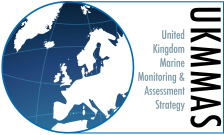Summary of progress towards Good Environmental Status

SEALS
Overall, GES for seals in the UK has been partially met. Data availability limits our capacity to confidently assess status but where good evidence exists, the UK picture is mixed. GES has been met for grey seals across their range. Harbour seals have not yet achieved GES in the Greater North Sea.

CETACEANS
Cetaceans overall have not met GES across both the Celtic Seas and Greater North Sea sub-regions. Data availability limits our capacity to confidently assess status, particularly for abundance and distribution, but where good evidence exists the UK picture is mixed.

MARINE BIRDS
Despite a reduced threat from invasive mammals at important marine bird island breeding sites, overall marine birds in both the Greater North Sea and Celtic Seas regions have not met GES.

FISH
Fish biodivesity have not met GES across UK seas despite the improving status of some individual populations of sensitive fish. Most assessed populations of sensitive fish species were no longer declining in both the Greater North Sea and Celtic Seas (stable or increasing). However there are long-term declines in the proportion of large demersal fish found in both regions.

PELAGIC HABITATS
The environmental status for pelagic habitats in UK seas is uncertain. There is currently no suitable model for assessing GES for pelagic habitats, this results in lower confidence with the GES assessment. However, all currently available evidence suggests that pelagic habitats in both the Greater North Sea and the Celtic Seas are both in “not good” status.

BENTHIC HABITATS
Although there have been some improvements, the overall picture for benthic habitats is still one of deterioration, particularly for sensitive habitats. As a result, benthic habitats in both the Greater North Sea and Celtic Seas regions have not met GES.

NON-INDIGENOUS SPECIES
The achievement of GES with respect to NIS is uncertain for both the Celtic Seas and the Greater North Sea due to data limitations and a lack of comprehensive NIS monitoring in UK waters.

COMMERCIAL FISH
Overall, commercially exploited fish and shellfish have partially met GES. By integrating the criteria for both indicators (fishing pressure and reproductive capacity), our assessment shows 42% of marine quota fish stocks and 11% of non-quota shellfish stocks achieving GES. This is a GES increase of 9% for marine quota and 6% for non-quota shellfish stocks from previous assessment period.

FOOD WEBS
Overall, food webs have not met GES across the marine strategy area. Demersal communities have not achieved GES in either the Greater North Sea or Celtic Seas. Plankton community indicators show decreasing productivity trends in both seas. Change in fish feeding guild biomass was mixed, with increases in benthivores, piscivore and pisco-crustivore biomass in southern North Sea and Celtic Seas, but decreases in the biomass of planktivores, pisco-crustivores and piscivores in the northern North Sea.

EUTROPHICATION
Eutrophication has met GES in UK seas. The majority (95%) of UK coastal, shelf and oceanic areas are found to be at Good Environmental Status. However, 3% of coastal waterbodies have not achieved GES, with a further 2% achieving only partially GES due to levels of nutrients giving a higher risk of not achieving GES into the future.

CHANGES IN HYDROGRAPHICAL CONDITIONS
Whilst no formal assessment is offered in this consultation, we assert that Hydrographical conditions has met GES, based on the same premise presented in the 2019 assessment. This drew on evidence from case studies that examined existing or potential future planning applications. The current regulatory regime continues to be sufficiently robust to ensure that any significant long-term impacts to the criteria listed for this descriptor are mitigated.

CONTAMINANTS
Overall, contaminant concentrations in UK seas have not achieved GES. This is because four heavy metals (lead, mercury, copper, zinc) and two other persistent pollutants (PBC and PBDE) were above environmental thresholds in sediments and/or biota, in at least one assessed biogeographic region.

CONTAMINANTS IN SEAFOOD
Contaminant concentrations in UK seafood have met GES for shellfish. Recent surveys (2016 – 2020) of contaminant concentrations only contained data from shellfish, but not for finfish. Therefore, we cannot determine GES for contaminant concentrations in UK seafood for finfish.

LITTER
The UK has not met GES for marine litter. Overall marine litter levels remain high, although there are encouraging reductions in beach litter and in plastics found in the stomachs of fulmar. However, litter on the seafloor remains high and has shown an increasing trend in the Greater North Sea.

INPUT OF ANTHROPOGENIC SOUND
The environmental status for underwater noise in UK seas is uncertain. This is because threshold values for GES have yet to be defined. Both underwater noise indicators (impulsive and continuous) show an increasing trend in the assessment period, suggesting our seas are becoming noisier.
